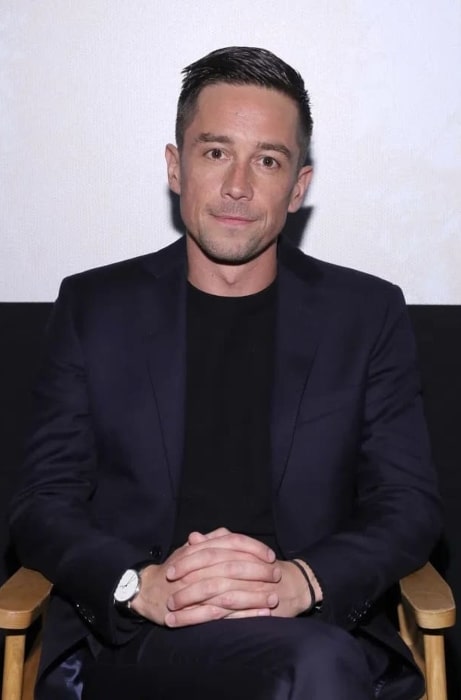Are a handful of young, relatively unknown engineers truly poised to reshape the landscape of federal technology, all under the watchful eye of Elon Musk? This intriguing proposition has sparked a firestorm of debate, centered around the identities and capabilities of six individuals tasked with modernizing aspects of the US government, a task many seasoned professionals would consider a Herculean effort. The names that keep surfacing in this complex narrative are Akash Bobba, Edward Coristine, Luke Farritor, Gautier Cole Killian, Gavin Kliger, and Ethan Shaotran. Their relative inexperience, coupled with their sudden prominence, has led to a flurry of speculation and analysis. The question remains: can they deliver?
The involvement of these individuals in the “DOGE” project, reportedly spearheaded by Musk, has drawn considerable attention. The very nature of the project, its scope, and its ultimate goals remain somewhat shrouded in a mist of conjecture. However, the fact that these young engineers have been granted access to sensitive government information, including GSA emails and high-level clearances, suggests a level of trust – or audacity – that is both surprising and, for some, deeply concerning. The implications of this arrangement are vast, potentially impacting everything from financial management to technological infrastructure within the federal government. The selection process, the level of oversight, and the long-term consequences of their involvement are all crucial elements in understanding the unfolding situation. The speed with which these individuals have been integrated into such a sensitive undertaking adds another layer to this already complex picture.
| Name | Age | Background | Role/Involvement |
|---|---|---|---|
| Akash Bobba | 21 | Information not readily available. | Reportedly involved in the DOGE project. |
| Edward Coristine | 19 | Information not readily available. | Reportedly involved in the DOGE project. |
| Luke Farritor | 23 | Information not readily available. | Reportedly involved in the DOGE project. |
| Gautier Cole Killian | 24 | Graduated from McGill University; Former employee at Jump Trading (high-frequency trading); Studied blockchain. | Member of the DOGE team; Reported to be involved in modernizing federal technology, potentially impacting government funds management. Reportedly an Environmental Protection Agency employee. |
| Gavin Kliger | 25 | Information not readily available. | Reportedly involved in the DOGE project. |
| Ethan Shaotran | 22 | Information not readily available. | Reportedly involved in the DOGE project. |
For reference and additional information please visit : WIRED.
The rapid rise of these young engineers, propelled into the spotlight by their association with Elon Musk and the enigmatic DOGE project, has been met with a mixture of fascination and skepticism. Their youth, combined with their apparent lack of extensive experience in government or large-scale technological projects, has raised eyebrows among seasoned observers of the political and technological landscapes. While some may see their fresh perspectives and innovative approaches as a breath of fresh air, others are more cautious, citing the potential risks associated with entrusting such significant responsibilities to individuals with relatively limited track records. The fact that Musk himself publicly acknowledged and supported their efforts on social media, despite the ensuing scrutiny, further highlights the unique nature of this situation.
Gautier Cole Killian, in particular, has garnered attention due to his background in finance and his prior experience at Jump Trading, a firm specializing in high-frequency trading. This experience, coupled with his academic background in blockchain technology, positions him as an individual with a potentially significant understanding of algorithms and financial markets – skills that could be directly applicable to the modernization efforts underway. His role within the DOGE team, and his possible involvement in government fund management, highlights the potential for his expertise to have a tangible impact. Others, however, have noted that, his relative lack of experience in government is also worthy of note, as is his current status as a volunteer for the DOGE initiative, raising questions about the degree of his formal commitment and the scope of his responsibilities.
The focus on these six individuals is not merely anecdotal. The very idea of a group of young, relatively unknown engineers being tasked with such a complex and sensitive undertaking is almost unheard of, which is why it attracts the attention of news outlets across multiple domains. Their involvement underscores the evolving relationship between private enterprise, technological innovation, and the government, a relationship that is growing increasingly complex and intricate. The dynamics at play are such that the scrutiny they’re facing is far from simple, and this situation is bound to continue developing over time.
The scrutiny surrounding the engineers extends beyond their professional capabilities; questions are being asked about the potential implications of Musk’s involvement. The lack of transparency surrounding the project's objectives and the role of these engineers fuels this scrutiny. The public is left to guess at the exact nature of the modernization efforts, and how the involvement of these engineers will affect the various arms of government. This lack of information, coupled with the individuals' relatively young ages and lack of experience in government, creates an environment ripe for speculation and concern. Critics are keen to emphasize that while innovation and fresh perspectives are important, the complexity of government and the need for established processes and oversight should not be overlooked.
The involvement of these engineers with Musk and his initiatives also raises questions about the potential for conflicts of interest. With Musk’s history of pushing the boundaries of technology and innovation, and his penchant for disrupting established industries, the partnership is under the microscope. While the engineers are described as working to modernize federal technology, the exact nature of the project and the potential benefits are not entirely clear. The lack of clear details has left the public to ponder the overarching goals of the DOGE initiative. Furthermore, the limited public information about the engineers’ backgrounds, their precise roles, and the extent of their access to sensitive information adds another layer of complexity to the situation, feeding the questions and adding to the ongoing intrigue.
The reactions to the news of the engineers' involvement have been varied. Some experts applaud the infusion of fresh talent and innovative thinking into the government. Others express concerns about the lack of experience and oversight. These concerns are fueled by the sensitive nature of the work, the potential for unintended consequences, and the need for accountability. As the project continues to unfold, it’s certain that these six engineers will continue to be the subject of scrutiny and debate. The results of their work, and the overall impact of the DOGE initiative, will likely provide the answers needed to fully judge the decision to include them.
The situation is a modern-day example of how technological progress is upending the status quo, and the role of the younger generations in government. While the future remains uncertain, one thing is clear: the story of Akash Bobba, Edward Coristine, Luke Farritor, Gautier Cole Killian, Gavin Kliger, and Ethan Shaotran, and their involvement with Elon Musk and the DOGE project, is a story that is far from over. The decisions made, the projects undertaken, and the impact of their work will continue to be closely observed. The stakes are high, the potential consequences are far-reaching, and the ultimate outcome remains to be seen.



